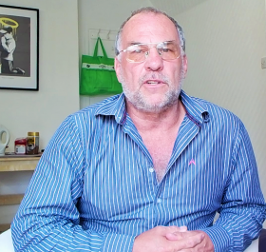Opinion: Latest U.S. Broadcast Standard Will Founder on Mobile Industry Indifference
BRISTOL, ENGLAND—The newest standard in the U.S. broadcast TV sector is ATSC 3.0, which promises to bring the broadcasters into the mobile age. The technology is still making its way past the regulator, the FCC, but it is already too little, too siloed and too late to make a significant impact.
ATSC 3.0 could begin being deployed by early next year. Broadcasters are eager for the upgrade—it promises to transform over-the-air TV by delivering broadcast content through an IP backbone that will enable local stations to improve emergency alerting, deliver UHD content, offer video-on-demand and improve advertising.
Local station groups like Sinclair Broadcast Group have placed a lot of hope in ATSC 3.0 as a bridge to the future for their companies, which have largely been left out of the great transition to anytime, anywhere video streaming, next generation video formats and the rise of mobile content.
“The next-gen ATSC 3.0 technology will transform how we interact with consumers and allow us to implement value-enhancing business models as the convergence and emergence of alternative platforms and companies proliferate,” said David Smith, executive chairman at Sinclair, earlier this year. “In anticipation of ATSC 3.0’s approval, we have been laying the groundwork for development of a nationwide network, design of 3.0 chipsets, and will be testing single frequency network technology and advanced business models later this summer.”
Sinclair is pursuing ATSC 3.0 as the content delivery piece of a wider mobile-first strategy, but is stubbornly tied to using ATSC 3.0 as its bridge to the modern era. The company has offered some one million ATSC 3.0 receiver chips to smartphone makers for free, in hopes that the technology will find its way into consumers’ smartphones and begin the process of building out an ATSC 3.0 device ecosystem.
It’s very important that broadcasters get on mobile devices. Data indicates mobile phones are the best way to reach specific consumers, like millennials, for advertising. In fact, a recent Nielsen report found millennial viewers aren’t nearly as adverse to advertising as once thought. “Millennials are quite open to viewing ads as long as the content they are viewing is free on their mobile devices,” according to Nielsen’s ‘Millennials on Millennials’ report.
Mobile video delivery has been a big talking point for ATSC 3.0 proponents. Instead of streaming content to mobile devices, broadcasters want to beam content to mobile phones using a broadcast television and IP hybrid standard and an ecosystem of embedded tuners that use scalable high efficiency coding and layered division multiplexing.

Peter White This is the latest way for broadcasters to get their technology and content on smartphones—earlier, failed platforms include Qualcomm’s MediaFLO, Dyle TV and TabletTV. None of these solutions have fared very well, mostly because they required extra hardware investment for a very slim use case. Dyle TV, for example, required users to attach a tiny TV antenna to an iPhone or iPad, but was only able to receive content from local stations that broadcast TV using the ATSC-M/H standard for mobile devices. Because not every station in each market used ATSC-M/H, the service was limited to a few stations in around 40 metro areas.
This approach improved with TabletTV, a newer offering from Motive Television and Granite Broadcasting. TabletTV uses a small digital tuner, called a “TPod,” to transmit broadcast TV to the user’s tablet. While the tuner doesn’t need to plug directly into the mobile device, users still need to carry the tuner around with them to use the service outside the home.
While none of these solutions gained much traction among consumers, broadcasters aren’t ready to give up. Instead of forcing consumers to buy an extra small antenna for the mobile devices, ATSC 3.0 enables those antennas to be embedded directly into the mobile devices. But in order for the technology to actually deliver value to viewers, it needs to be available across a wide range of devices—not just one or two smartphone models.
Broadcasters say ATSC 3.0 will eventually become available in mainstream consumer electronics, including smart TVs and tablets. LG debuted ATSC 3.0-enabled TV sets at CES this year and Samsung has signed a memorandum of understanding or ATSC 3.0 in its TV sets with a group of U.S. broadcasters.
There may be good reason for TV makers to include these new chips in TV sets—particularly in South Korea, which also uses the standard—but there’s hardly any incentive for phone makers to do so. Adding the technology could add incremental costs to the phone itself and eat into already falling margins.
According to Sinclair, one mobile phone maker has expressed interest in its free chip deal. The chips Sinclair is offering are made by Saankhya Labs, and are able to support other broadcasting standards, too, which helps broaden the use case, though only by a little. Most other broadcasting standards put a huge drain on batteries, so that a smartphone battery can be dead in 30 to 45 minutes of viewing. However, ATSC 3.0 is seen as converging with the broadcast standard of Europe DVB-T2 and the two may eventually become one standard in the next generation (if broadcast TV survives that long).
Widespread adoption by phone makers will require ATSC 3.0 to be built into multi-purpose communication chips, made by the likes of Qualcomm, MediaTek, Samsung and others. It seems unlikely that this can just be enacted in software using existing radios inside phones—although there have been some such attempts. But before that happens, broadcasters will need to begin broadcasting in ATSC 3.0.
Sinclair and other broadcasting groups are also interested in using ATSC 3.0 to deliver TV services in skinny bundle-type packages. Sinclair joined Nexstar in a MoU for the formation of a consortium that’ll “explore products and services associated with ATSC 3.0 and monetization opportunities such as spectrum utilization, virtual MVPD platforms, multicast channels, automotive applications, single frequency networks and wireless data applications, among others.”
But any mobile video play will come up against the other obstacles—the wireless carriers. Cellcos don’t gain anything from the technology. Wireless providers like Verizon and AT&T have very little reason to help broadcasters reach mobile consumers—unless the broadcasters come with a lucrative deal to entice Verizon or AT&T to do so, perhaps something like an Aereo-type skinny streaming TV service, delivered to wireless customers. And any such service would likely need to have national reach to make it worth anyone’s time and use cellular data not broadcast.
Despite the uphill battle, Sinclair is currently in the process of launching a beta test of ATSC 3.0-delivered video services to mobile devices in a few markets in the U.S., which focus on developing enhanced content, targeted advertising, and mobile distribution.
This piece was republished with the permission of Peter White, the principal analyst and founder of Rethink Technology Research Ltd.
Get the TV Tech Newsletter
The professional video industry's #1 source for news, trends and product and tech information. Sign up below.
